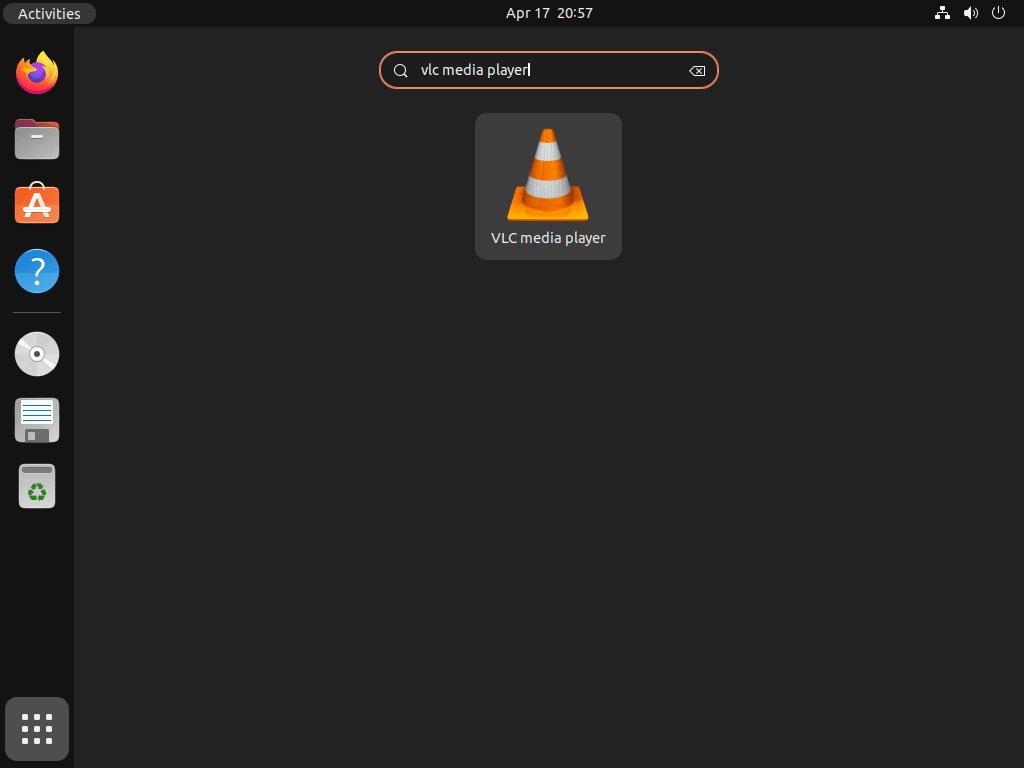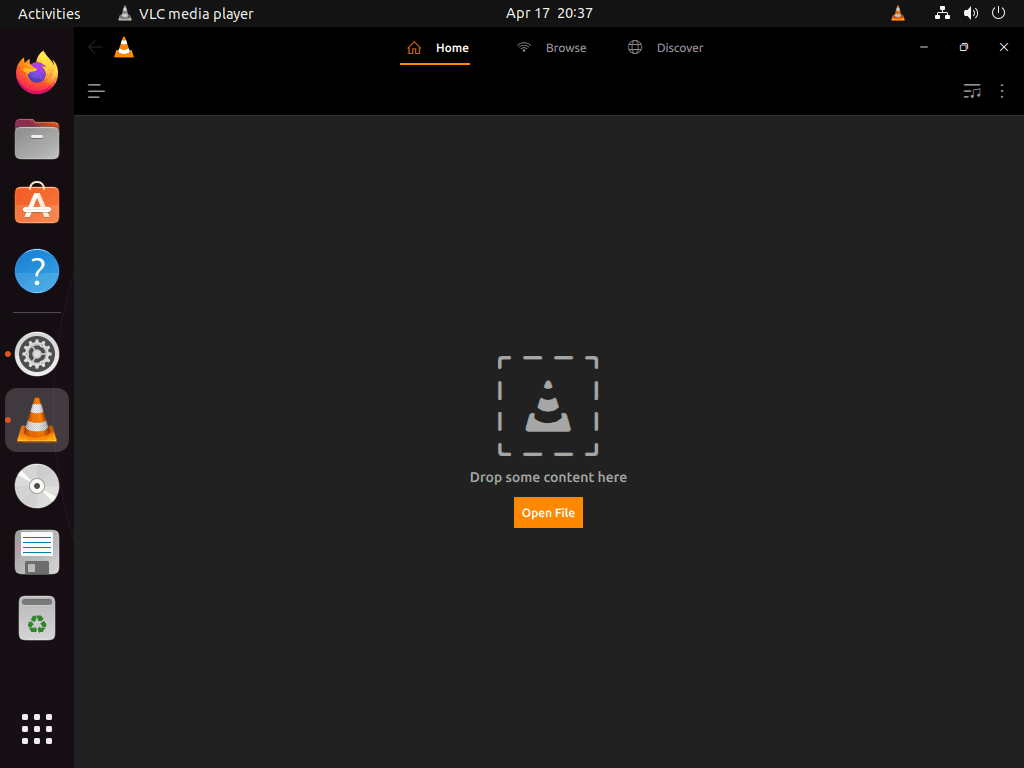VLC Media Player handles virtually any audio or video format you throw at it, from local files to network streams and DVDs. Whether you need to play obscure codecs without hunting for additional software, convert media between formats, or stream content from a URL, VLC provides a single solution that works reliably across platforms. By the end of this guide, you will have VLC installed on Ubuntu and verified working, with options ranging from the stable Ubuntu repository version to development builds and sandboxed alternatives.
Choose Your VLC Installation Method
Ubuntu offers multiple installation paths for VLC Media Player. However, each method has trade-offs between stability, update frequency, and system integration that suit different use cases.
| Method | Channel | Version | Updates | Best For |
|---|---|---|---|---|
| APT (Ubuntu Repository) | Ubuntu Packages | Stable | With system updates | Most users who want reliability |
| APT (VideoLAN PPA) | Launchpad PPA | Development | Daily builds | Testers and developers only |
| Flatpak | Flathub | Latest stable | Independent of system | Users wanting sandboxed apps |
| Snap | Snapcraft | Latest stable | Automatic background updates | Users preferring Canonical ecosystem |
For most users, the APT method using the Ubuntu repository is recommended because it provides a tested, stable version that integrates seamlessly with your system and receives security updates automatically. Only use the VideoLAN PPA if you specifically need to test development features.
This guide supports Ubuntu 22.04 LTS and 24.04 LTS installations. The VideoLAN PPA provides development builds for both LTS releases, while Flatpak and Snap remain compatible across all Ubuntu versions. Commands shown work identically on both supported LTS releases.
Method 1: Install VLC Media Player from Ubuntu Repository or Development PPA
Update Ubuntu Before VLC Installation
Before installing any software, refresh your package index and apply pending updates. This ensures you install the latest available version and avoid dependency conflicts:
sudo apt update && sudo apt upgradeOption 1: Install VLC from the Ubuntu Repository
The Ubuntu repository includes a stable, tested version of VLC that receives security updates alongside your system. As a result, this option suits most users who prioritize reliability over having the newest features:
sudo apt install vlcOnce installation completes, verify VLC is accessible by checking its version:
vlc --versionVLC media player 3.0.20 Vetinari (revision 3.0.20-0-g6f0d0ab126b)
Option 2: Install VLC from the VideoLAN Development PPA
The VideoLAN master-daily PPA provides automated development builds (currently VLC 4.0 release candidates). These builds do not undergo quality assurance and may contain bugs or regressions. Only use this PPA if you are prepared to troubleshoot issues and report bugs upstream.
First, add the VideoLAN master-daily PPA to your system:
sudo add-apt-repository ppa:videolan/master-daily -yNext, refresh your package list to include packages from the newly added PPA:
sudo apt updateNow install VLC, which will pull the development version from the PPA:
sudo apt install vlcFinally, verify the installation by checking the version number, which should show a 4.0 development build:
vlc --versionVLC media player 4.0.0-rc1 Otto Chriek
Method 2: Install VLC via Flatpak and Flathub
Flatpak provides a sandboxed environment that isolates VLC from your system libraries. As a benefit, this method offers the latest stable release independent of your Ubuntu version and includes automatic security updates.
Flatpak is not pre-installed on Ubuntu. If you have not set it up yet, install it with
sudo apt install flatpakand restart your session before continuing. For detailed setup including the Flathub repository, follow our Flatpak installation guide for Ubuntu.
Add the Flathub Repository
First, ensure the Flathub repository is configured on your system:
sudo flatpak remote-add --if-not-exists flathub https://flathub.org/repo/flathub.flatpakrepoInstall VLC via Flatpak
With Flathub configured, install VLC using the following command:
flatpak install flathub org.videolan.VLC -yThen, verify the installation completed successfully:
flatpak info org.videolan.VLCVLC - VLC media player, the open-source multimedia player
ID: org.videolan.VLC
Ref: app/org.videolan.VLC/x86_64/stable
Arch: x86_64
Branch: stable
Version: 3.0.21
Method 3: Install VLC via Snap
Snap packages are self-contained and update automatically in the background. Since Ubuntu includes Snap by default on desktop installations, most users can install VLC immediately without additional setup.
Ubuntu includes Snap by default, but minimal installations may lack it. To ensure Snap is available, run
sudo apt install snapd -ybefore proceeding.
To proceed, install VLC from the Snap Store:
sudo snap install vlcAfterward, verify the Snap installation:
snap info vlcname: vlc summary: The ultimate media player publisher: VideoLAN✓ store-url: https://snapcraft.io/vlc license: GPL-2.0+ installed: 3.0.21 (3777) 322MB -
Launch VLC Media Player
After installation, you can launch VLC either from the terminal or through your desktop environment’s application menu.
Launch VLC from Terminal
If you installed VLC via APT, launch it directly:
vlcAlternatively, if you installed via Flatpak, use the Flatpak run command:
flatpak run org.videolan.VLCSimilarly, Snap installations require the snap run command:
snap run vlcLaunch VLC from Applications Menu
Alternatively, open VLC from your desktop environment. In GNOME, click Activities, then Show Applications, and select VLC media player from the application grid.


Manage VLC Media Player
Update VLC
The update process depends on which installation method you used.
Update via APT
With the APT method, VLC updates arrive with your regular system updates:
sudo apt update && sudo apt upgradeUpdate via Flatpak
To update only VLC, run the following command:
flatpak update org.videolan.VLCUpdate via Snap
Since Snap packages update automatically, you typically do not need to take action. However, you can trigger a manual refresh if needed:
sudo snap refresh vlcRemove VLC Media Player
If you no longer need VLC, remove it using the method that matches your original installation.
Remove via APT
To remove VLC via APT, run the following commands to clean up orphaned dependencies as well:
sudo apt remove vlc
sudo apt autoremoveAdditionally, if you installed VLC from the VideoLAN PPA, remove the repository:
sudo add-apt-repository --remove ppa:videolan/master-daily -yThen, verify the removal completed successfully:
which vlcIf the command returns no output, VLC has been removed from your system.
Remove via Flatpak
To remove the Flatpak installation, run the following command which also removes application data:
flatpak uninstall --delete-data org.videolan.VLCAfterward, verify the removal completed successfully:
flatpak list | grep -i vlcIf the command returns no output, VLC has been removed from Flatpak.
Remove via Snap
To remove the Snap installation, use the remove command. Additionally, the --purge flag deletes all saved data and configurations:
sudo snap remove --purge vlcFinally, verify the removal:
snap list | grep vlcIf the command returns no output, VLC has been removed from Snap.
Conclusion
You now have VLC Media Player installed on Ubuntu using either the stable APT repository, the development PPA, Flatpak, or Snap. The APT method provides the most integrated experience with automatic security updates, while Flatpak and Snap offer newer releases with application sandboxing. For alternative media players, consider installing MPV on Ubuntu for keyboard-driven playback and scripting, or Celluloid if you prefer a GTK-based frontend. To convert and transcode video files, HandBrake on Ubuntu pairs well with VLC for media workflows.


